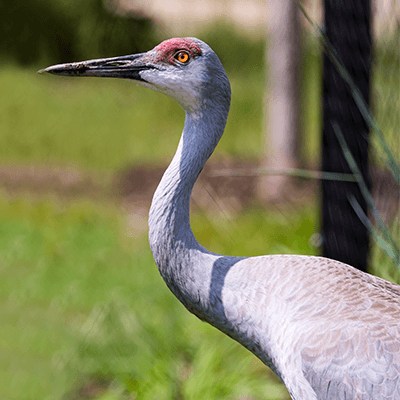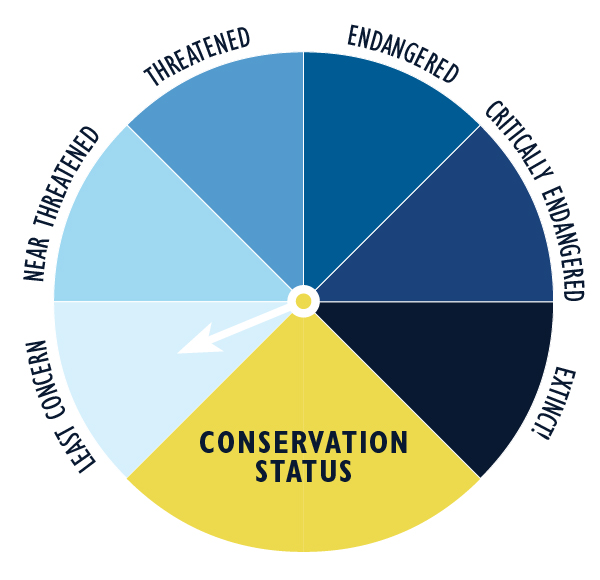
About Sandhill Crane
Sandhill cranes are large birds with heavy bodies, long necks, and long legs. They are uniformly gray in color, with a white cheek and a bald red crown on their heads. Sandhill cranes can be distinguished from other large wading birds in flight by their outstretched neck, and their wingbeats, which are a slow downward beat followed by a quick upward flick.
Habitat
In North America, this species breeds as far north as Alaska and the Arctic coast of Canada. They also breed in the Great Lakes region and westward across Idaho, Nevada, and Oregon. Most sandhill crane populations nest in open grasslands, such as wet meadows and freshwater marshes or bogs.
Diet
Sandhill cranes are omnivorous birds and feed mostly on cultivated grains such as corn, wheat, and sorghum. In northern regions, a wider variety of foods are consumed, including berries, small mammals, insects, snails, reptiles, and amphibians.
Family Life
These birds communicate primarily using physical displays and vocalizations. They use a series of sounds to signal their territory and to warn when a predator may be nearby. Sandhill cranes live and breed in pairs or family groups throughout the year. Also, sandhill cranes are perennially monogamous, meaning that breeding pairs remain together from year to year, maintaining the bond by performing courtship displays, remaining in close proximity, and calling together in unison.
Conservation Status
The conservation status of the Sandhill Crane is classified as least concern.
Threats
- Sandhill cranes have several major natural predators such as foxes, raccoons, coyotes, wolves, hawks, and eagles.
- When approached by another winged predator, sandhill cranes will fly at the attacker, kicking it with their feet. If a ground animal approaches, the crane will move toward the enemy, spreading its wings and pointing it’s bill directly at the predator.
- Habitat and wetland loss pose a major threat to the sandhill crane population as well, as humans often intervene through deforestation and agriculture.
Facts about Sandhill Crane
Class:
Aves (birds)Order:
Gruiformes (crane-like birds)Family:
Gruidae (cranes)Genus:
Grus (cranes)Species:
Grus canadensis (sandhill crane)Life Span:
7 – 21 years (wild) / 20 – 30 years (zoo)Size:
4 feet (1.2 m)Weight:
7 – 11.4 pounds (3.2 – 5.2 kg)Wing Span:
6.6 feet (2 m)
Fun Facts
- They have one of the longest fossil histories of any bird — the oldest sandhill crane fossil is 2.5 million years old!
- Our rescued sandhill crane is featured in our Wisconsin Heritage exhibit alongside our three American badgers.
- Cranes need their space! Sandhill cranes prefer to live far from humans. However, during migration, they are commonly seen feeding on crops and crop residue in agricultural fields.